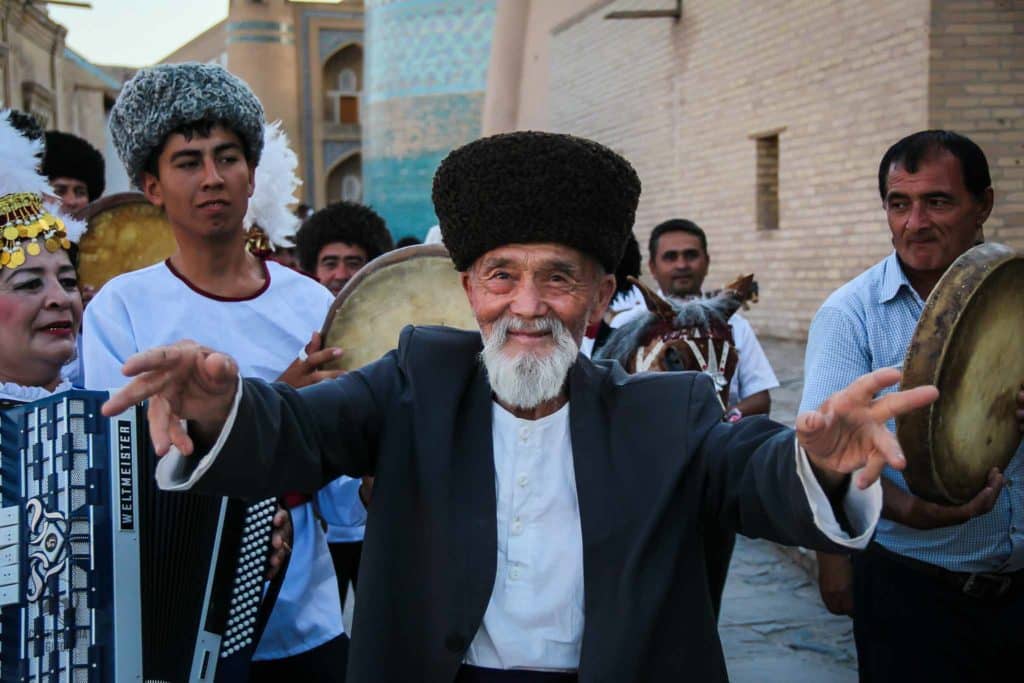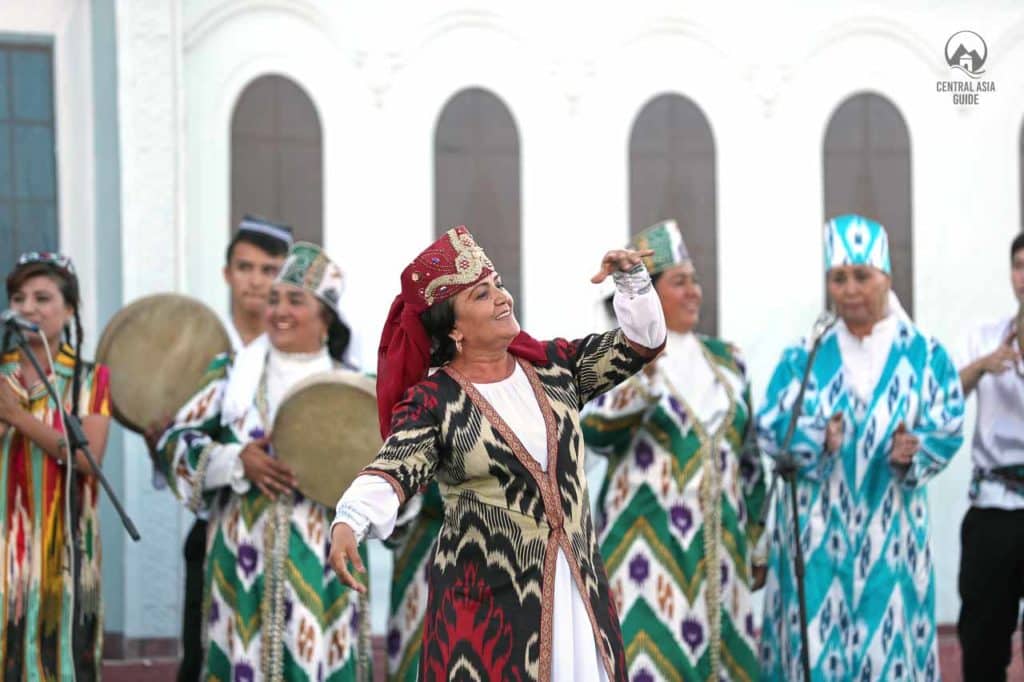Uzbek dance
Traditional UZBEK Dance
Uzbeks dances are distinguished by softness, smoothness and expressiveness of movements, easy sliding steps, original movements on a place and on a circle. Uzbek dances have been developing in Central Asia already from ancient times. During some excavations, archeologists discovered dancing figure images in the caves on the area. For instance, the Samarkand, Bukhara, and Khorezm art of dancers were already well known in many eastern countries in the 4th – 8th centuries AD.


Folk Uzbek dance includes traditions of almost all regions of Uzbekistan and shows therefore wonderful variety. Uzbeks dance everywhere, at weddings, family holidays, rural and urban events and even for the tourists in the touristic sights. These dances are passed over from generation to generation and maintain ancient dance traditions of the today’s and past Uzbek lifestyles.
Khorezm Lazgi Dance
In 2019 Khorazm dance Lazgi was added to the UNESCO Intangible Cultural Heritage of Humanity. Lazgi dance is prized for its ability to encapsulate the human creativity by reflecting the sounds and phenomena of surrounding nature, feelings of love and happiness. Lazgi has become a widespread dance in Uzbekistan but its roots are in the Khorezm Region and it can be best seen in Khiva.


Development of Uzbek Dance
In the early 20th century the Uzbek dance began to take shape of the mass arts. In 1923 a concert group of young executors was launched in the country (M. Koriyokuhov). Later in 1926, the first State mobile ethnographic group was established, with renowned musicians and a young dancer, Tamara Khonim joining the team. In 1936 the first ensemble of various songs and dance has been established in the country (choreographers: 0. Komilov, I. Okilov, L. Petrosova, E. Baranovsky, and M. Turgunbaeva). In 1956 the ensemble was known as “Shodlik”, and now – as “O’zbekiston”. This ensemble has enormously contributed to the development of the Uzbek classical dance. In 1957 M. Turghunbaeva founded an ensemble “Bakhor” (‘spring’) and supervised it up to the end of her life. This ensemble introduced Uzbek dance to the whole world. After M. Turghunbaeva, K. Mirkarimova, R. Sharipova, M. Irgasheva, and Yu. Ismatova led the ensemble. In 1958 the “Lazgi” ensemble was established.
Additionally, in state ensembles, there are more than hundred different other amateur ensembles in Uzbekistan. Various shows and television festivals are regularly held. Renowned performers are: Yusufjon Qyzyq Shakarjonov, Usta Olim Komilov, Otakhoja Saidazimov, Sharafot Satang Turaeva, Mikhalkhonim Khaimova, Bokijon Sagdullaev, Ravia Atajanova, Latif Zafirov, and others. Famous dancers of 60s and 90s are: T. Yunusova, O. Sagatova, V. Romanova, R. Nizomova, M. Irgasheva, D. Jabborova, B. Dustmuhammedova, M. Akhmedova, R. Sultonova, K. Muminov, and Yulduz Ismatova.
Other dances and culture in Uzbekistan and Central Asia
Page updated 25.9.2022